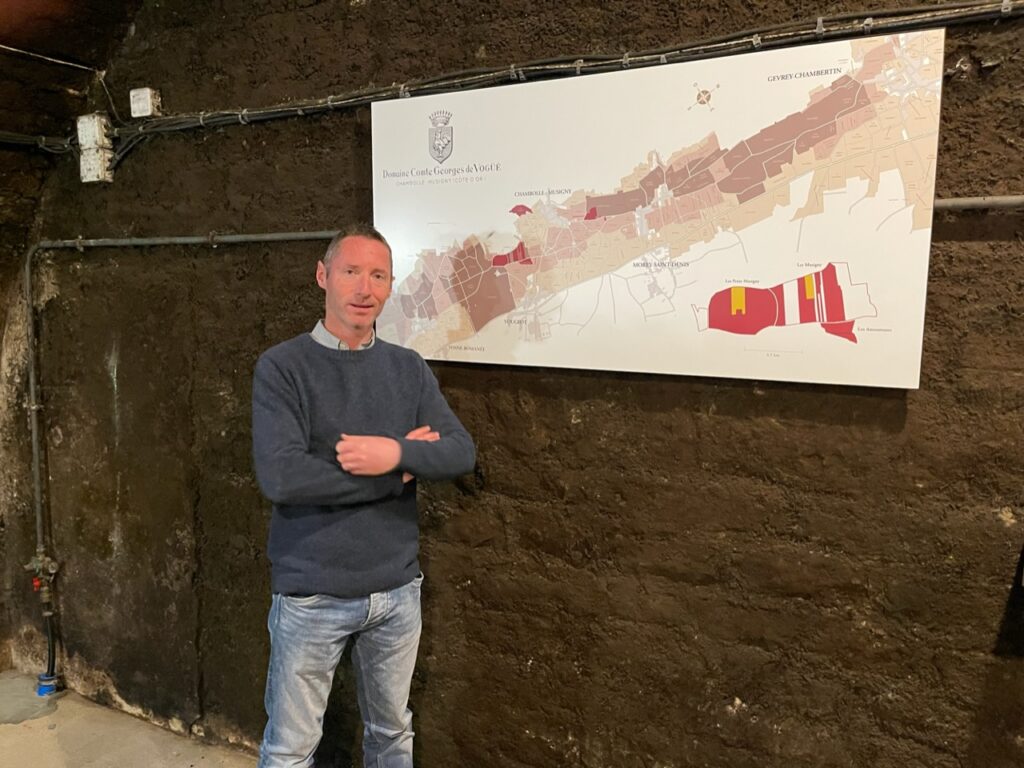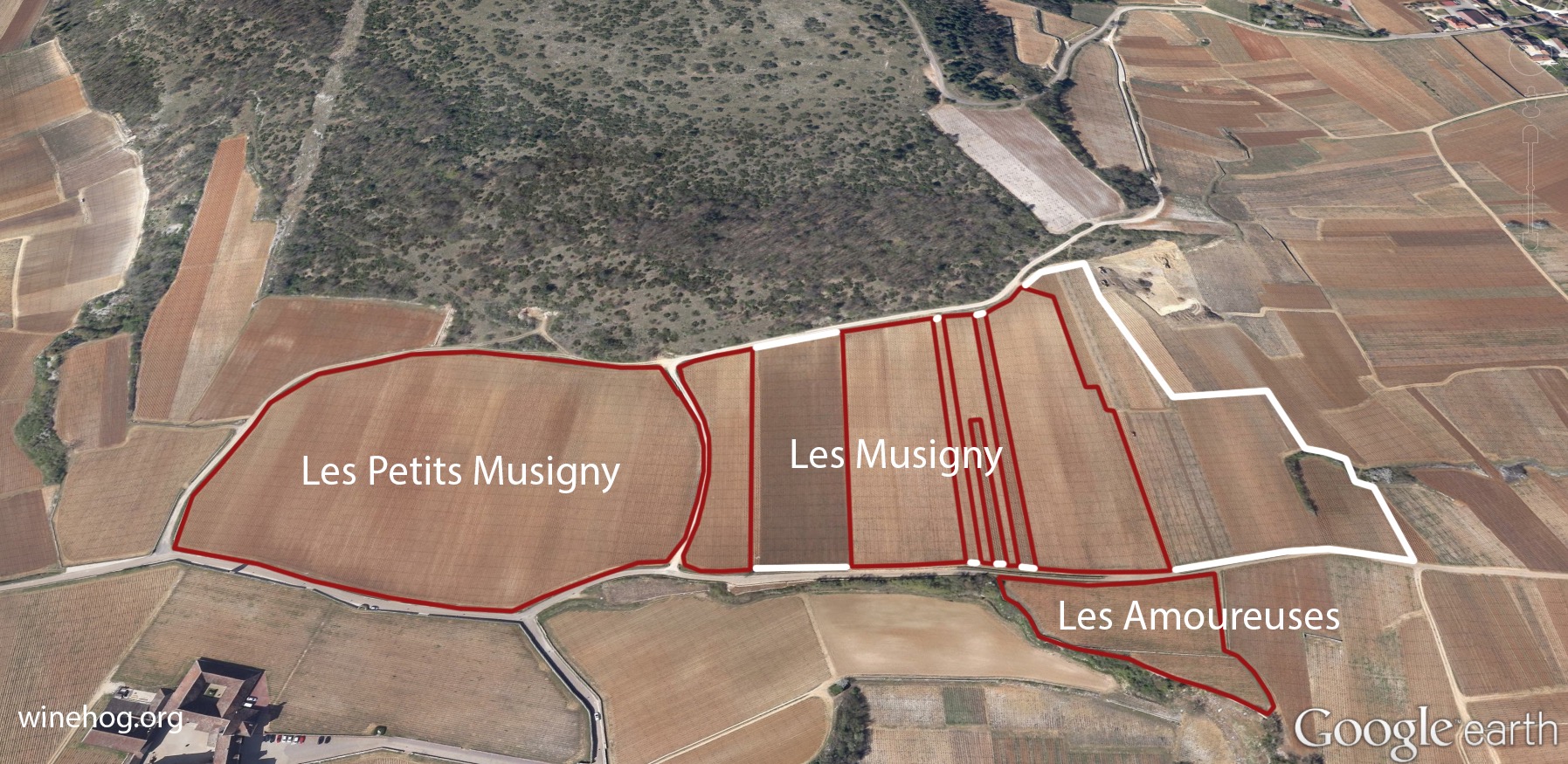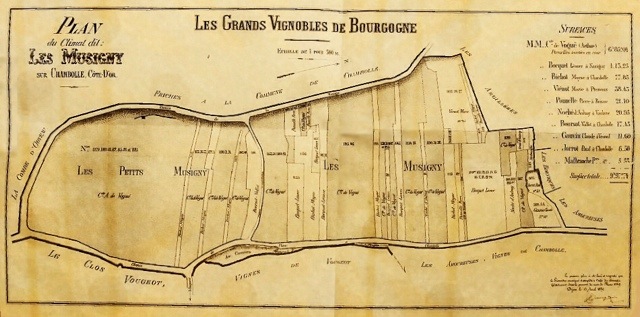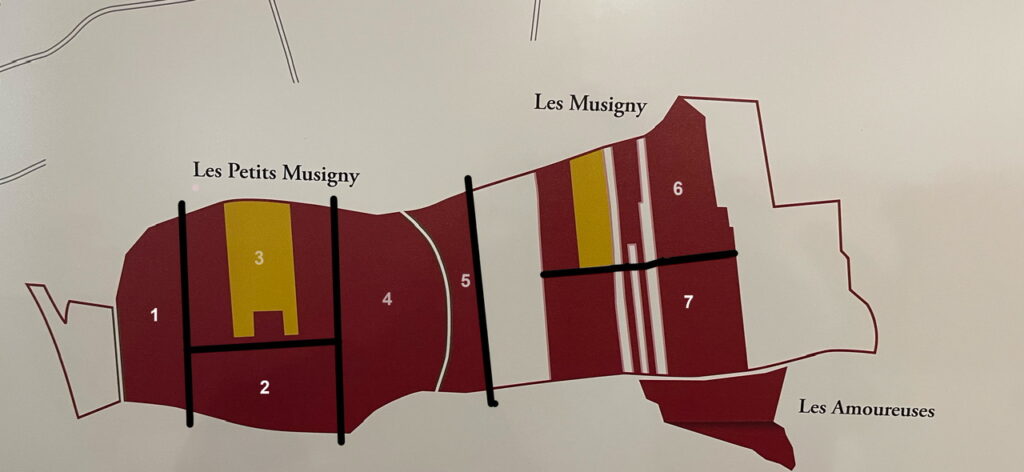Domaine Comte Georges de Vogüé is by far the largest owner of Musigny; it owns more than seven hectares, equivalent to almost 70% of this magnificent grand cru, located just north of the Chateau du Clos de Vougeot.
Musigny is to a large extent de Vogüé, and the de Vogüé name is very much linked to this vineyard. That said, it’s a serious offence to miss out on the other wines from this fine domaine.

Previously it wasn’t possible to taste wines from the individual parcels of de Vogüé Musigny separately. But with its 2022 version, the estate has vinified each of its eight sections individually, giving seven different Musignys (that will eventually be assembled into one Musigny Vielles Vignes) and then the Chambolle 1er Cru, made from the young vines in the appellation.
It also makes a white Musigny from two plots within the vineyard.
But let’s look at the de Vogüé Musigny from the top.
Musigny – the three sections
The Musigny vineyard includes three sections: Les (or Grands) Musigny, the main, northern part of the vineyard; Les Petits Musigny, just south of Les Musigny and a de Vogüé monopole; and lastly, the extension of the vineyard with a plot in the climat La Combe d’Orveau, which was added to Musigny in 1929 and 1989 (map below).

The Comte de Vogüé holdings in Musigny
Domaine Comte Georges de Vogüé is the only estate that owns plots in more than one section of the Musigny vineyard. It is the sole owner of Les Petits-Musigny, and owns half of Les Musigny.
The map below shows the estate’s holdings in both lieux-dits. The holdings in Les Musigny are somewhat fragmented, but in total de Vogüé owns six plots in Musigny.

The total area of these plots is 7.1208 ha: 4.1935 ha in Les Petits Musigny and 2.9273 in Les Musigny. These figures are from the official cadastre records, which gives a total area slightly higher than other sources.
The historic holdings of Domaine de Vogüé
The estate was founded around 1450 (read the full story of the domaine here), and while the de Vogüé name first entered the domaine’s history in 1766, it has been a dominant owner in Musigny as far back as my records and sources go.
Strangely enough, Lavalle’s 1855 work1 does not mention de Vogüé among the owners of Musigny or Les Petits Musigny. This is clearly an error on Lavalle’s part, and a quite substantial one at that.
Danguy and Aubertin2 mention de Vogüé as one of the principal owners of both Les Petits Musigny and Les Musigny in 1892. But the work also mentions other owners of Les Petits Musigny, indicating that some plots there were acquired by de Vogüé after the book’s publication in 1892. Danguy and Aubertin named Alberic Bichot and Boursot-Valot as the other owners of Les Petits Musigny.
The map below shows the ownership of Musigny in 1890, showing multiple owners of Les Petits Musigny, and showing as well that de Vogüé ownership in Les Musigny was somewhat different in 1890 than it is today.

This is confirmed by Rodier3 (1920), who mentioned three owners of Les Petits Musigny: de Vogüé, Mugnier, and Boursot, indicating that de Vogüé acquired the final monopole-creating plots in Les Petits Musigny sometime after 1920.
The Comte de Vogüé wines from the Musigny vineyard
Domaine Comte Georges de Vogüé currently vinifies nine wines from the Musigny vineyard. The main wine is the Musigny Vieilles Vignes, produced from vines older than 25 years and a blend of seven individual plots.
The grapes from the younger vines are used for its Chambolle 1er Cru, and lastly, it produces a white Musigny from the two yellow plots (below) within the appellation.

You need to login as a Premium subscriber to read the rest of this article. If you are not a Premium Subscriber, use the subscribe function and sign-up.

 - A true vin d’émotion – a Burgundy of passion
- A true vin d’émotion – a Burgundy of passion - A truly hedonistic wine – lively and enjoyable
- A truly hedonistic wine – lively and enjoyable - A vivacious wine for pure indulgance
- A vivacious wine for pure indulgance - A potential vin d´émotion - frais et léger
- A potential vin d´émotion - frais et léger